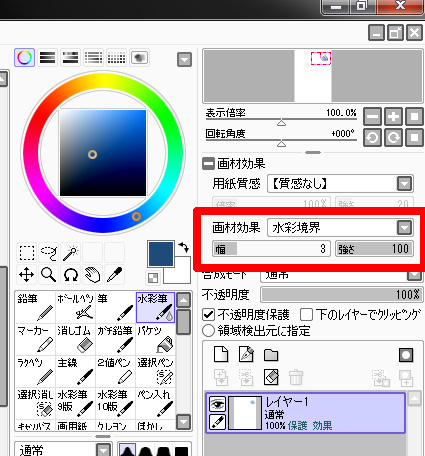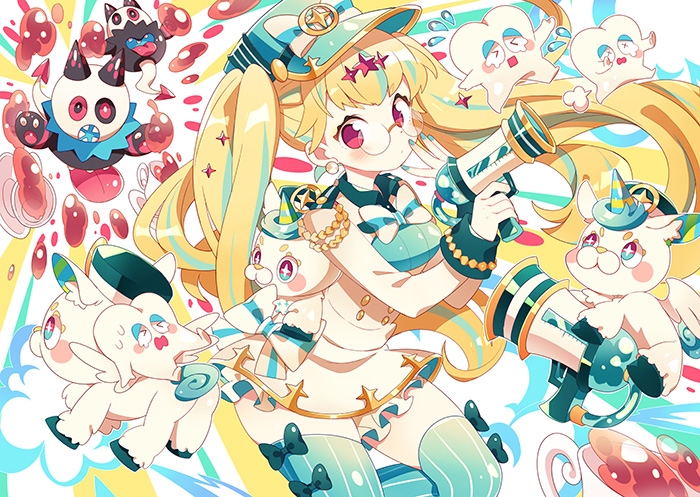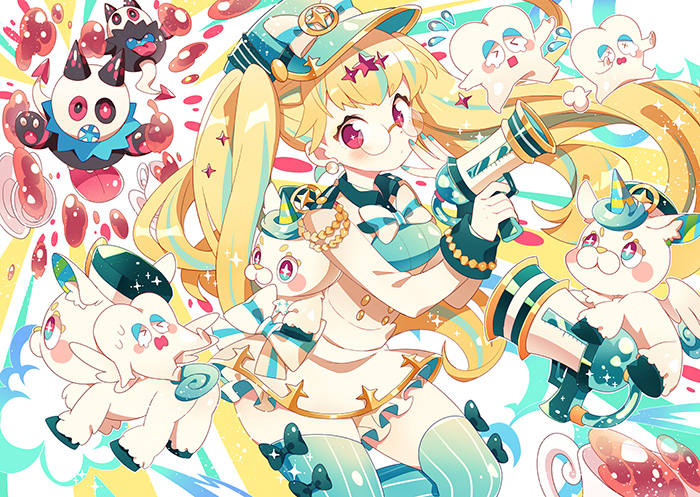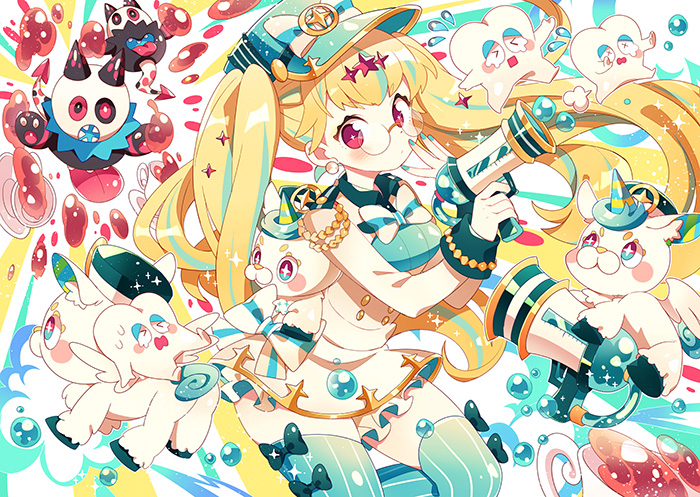キラキラ感で「カワイイ」を創り出す──上倉エクさんメイキング&インタビュー

インタビュー・文:小川 陽平
撮影・編集:関口敬文
発売20周年を迎えた『ロッテキシリトールガム』の記念企画「XYLITOL 20周年プロジェクト」では2020年に日本の主役となる20代、20組の若者にフォーカスをあて、さまざまなプロジェクトが展開中です。
そのひとりに選ばれたのが、イラストレーターの上倉エクさん。『キシリトールガム』の特別パッケージを手がけられたときには、このpixivisionでインタビューにも応えていただきました。

そんな上倉エクさんの新たな挑戦は”個展”。自分の絵だけで構成される展覧会は、イラストレーターにとって大きな夢。今回その夢を実現する場所となったのは、なんとJR秋葉原駅! 2017年7月31日(月)から2017年8月6日(日)までの期間、JR秋葉原駅昭和通口改札外に上倉エクさんのイラストが掲出されるのです。
今回は、そのチャレンジ用に執筆されたイラストのメイキングをご紹介します。実際に描かれたイラストを見ながら、ご本人に解説していただきました。キラキラした透明感とポップな色合いで描かれる“カワイイ”は、どうやって創り出されるのでしょうか? 必見ですよ!


まずは衣装デザインから!


まずはラフを描く前に登場させたいキャラクターたちのデザインから始めます。
私の場合は、衣装デザインからポーズ、ポーズからキャラクターの表情と、順にインスピレーションが沸いてくるので、必ずこの手順でイラストを描きます。衣装の仕上がりで最初に思い描いていた完成イメージから大きく変わるというのは、往々にしてありますが、まあそれはそれで(笑)。
イラストのメインとなるXYLITOLちゃん(仮)は、商品のイメージから「守る」をテーマに、ちょっと警察官っぽいデザインに。色も商品と同じ緑系としました。対する敵キャラたちは、本物の菌の写真の形状からイメージを脹らませてデザイン。色はメインキャラと同系統の色を入れつつ、ステイン的なイメージで茶・赤系統を盛り込みました。
大ラフ

デザインも固まったので大ラフでポーズを検討します。衣装にハマったポーズになるまで、何度も何度もラフを描きますが、今回はこのポーズに決まるまでに3、4パターンぐらい描きました。
ポーズが決まったあとに顔を入れていくので、デザイン画とはずいぶんと印象が変わっていますね(笑)。
XYLITOLちゃんとマスコットキャラがバチっとハマったので、空いている部分に敵キャラやちびキャラたちを配置していきます。
カラーラフ

大ラフが出来上がったら、ざっくりと色をのせていきバランスを見ます。衣装デザインの段階で色彩設計は終わっていますが、一枚絵で見たときの色の配置を確認するためには、これも欠かせない作業です。完成のイメージもつかめるので、オススメですよ。
線画

線画のクリーンナップを行います。ラフにレイヤーを重ねてペン入れをしていきますが、普通のペン先ではなくフリーのカスタムブラシを入れて、鉛筆のような効果が出るようにしています。

ブラシを使って描く線を柔らかく見せたい場合、このような数値設定にします。

一方でしっかりとした線を描きたいときは、このような数値設定にします。
彩色の段階で主線の色を変えることもあるので、パーツごと、キャラクターごとにレイヤーを分けて描き進めていきます。(中央のXYLITOLちゃんでレイヤー数はだいだい15枚くらいです)
キャラクターの配置をずらすこともあるので隠れてしまう部分もきちんと描いておくと、いざというときに助かりますよ。
下塗り その1

下塗り その2

ひと通り色を塗ったら、影を入れる前に肌の質感を入れていきます。私の場合は塗りつぶしとグラデーションを多用する塗り方なので、柔らかさと丸みを出す効果は先に入れるようにしています。
質感は新規で作ったレイヤーをクリッピングして、ブラシで効果を付けていきます。ここで用いるレイヤーの種類は乗算です。彩色その1


彩色その2

髪の毛の立体感を決めるために色を追加していきます。作業自体は前の工程とあまり変わりません。
影付け



ハイライト

影がひと通り入ったので、次はハイライトを入れていきます。ハイライトは乗算ではなく発光レイヤーに設定。濃いめの色を入れて情報量を上げていきます。
ブラシサイズを100~200ほどにして、入れたい場所に大きく色を乗せていきます。不要なところはあとから消しゴムで削りながら形を整えています。
背景と仕上げ


ハイライトまで入りXYLITOLちゃんが完成したので、敵キャラと背景を彩色していきます。基本的な手順は変わりません。パーツごとの色塗りを地道に繰り返します……。
ひと通り終わったあとで、効果をいくつか入れています。キラキラや持っている水鉄砲(?)から出る謎の液体を描き足して、全体の密度を調整します。キラキラを入れるとポップで可愛く見える気がするので随所に入れます。
完成

最後に全体の色味を少しだけ調整して完成です。ここまで読んでくださって、ありがとうございました。
私の描き方では、線画から彩色をパーツごとに仕上げていき最終的にバランスを取る描き方をしているので、どうしてもレイヤーの枚数が増えてしまいます。今回のようなサイズが大きいイラストではツールの挙動がだいぶ不安定になるのであまりオススメできませんが、修正や効果といった調整が後々しやすくなるというメリットもあります。このあたりは描き方でかなり変化しますので、自分なりのちょうどいいバランスを見つけてみてください。
個展の開催場所はJR秋葉原駅ですよ!



ハイライトの入れ方で質感を変化させる